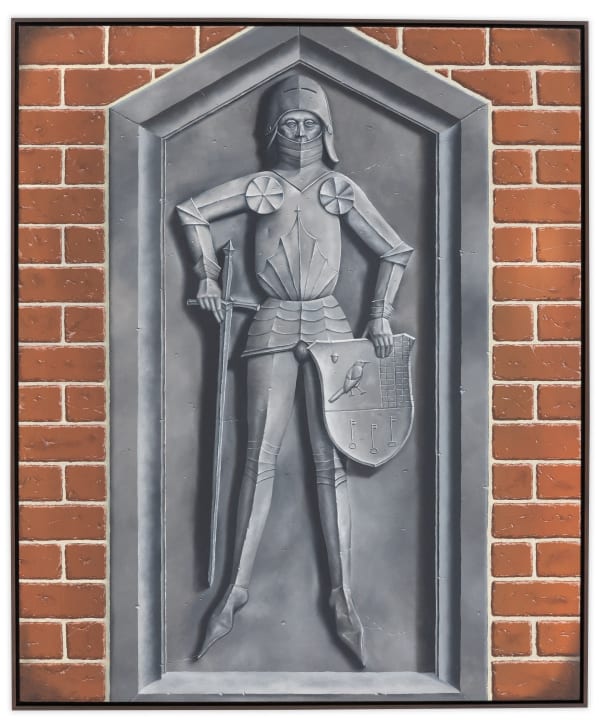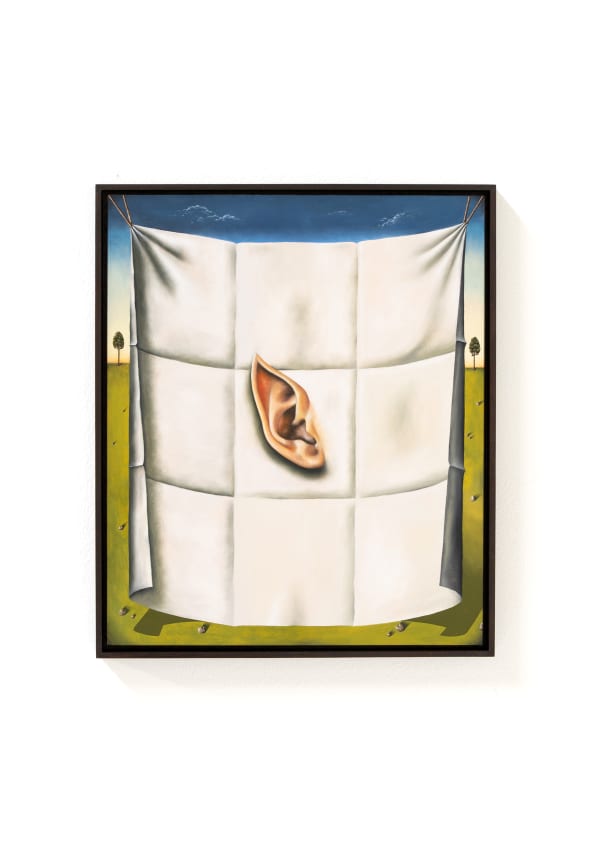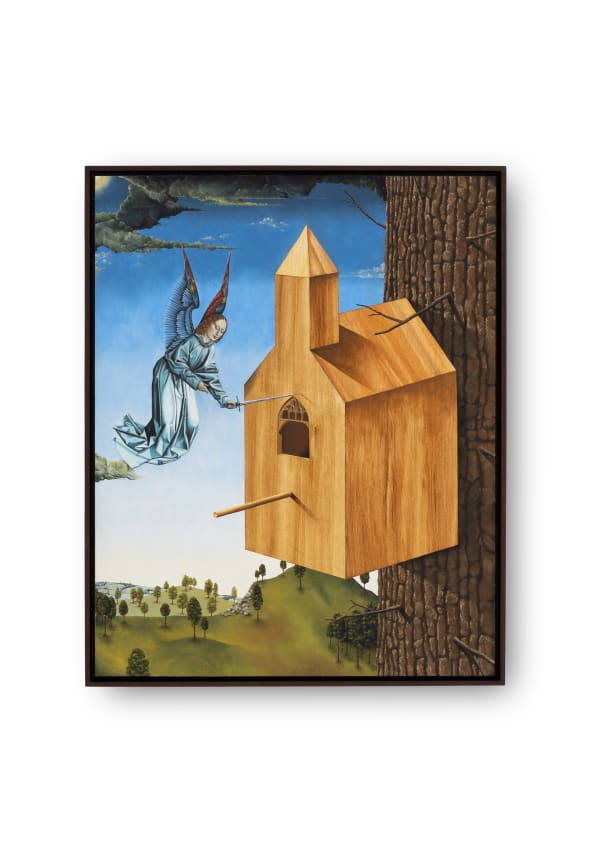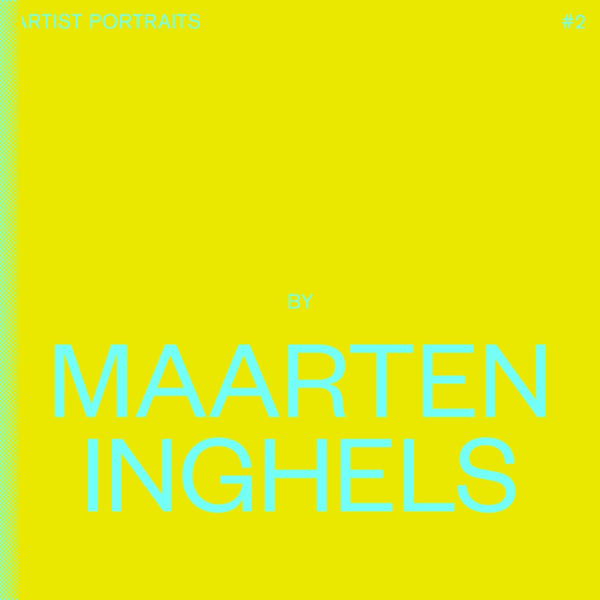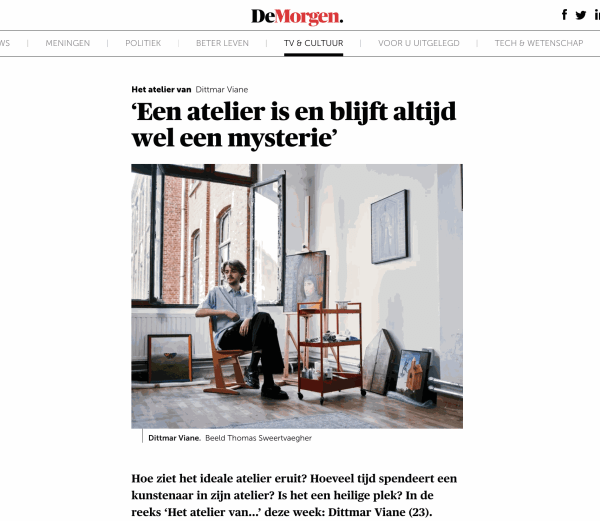Outside the Gate: Solo Exhibition by Dittmar Viane
The painterly work of Dittmar Viane is significantly influenced by the Early Netherlandish painting from the 15-16th century. Painters like Dirk Bouts (1415-475) and Hans Memling (1430-1494) employed distinctive drawing techniques like linear perspective to create a uniquely realist but slightly estranging feel; and being one of the first generation of painters to work with oil paint they developed subtle painterly techniques for chromatic glazing that, combined with the subdued hues of their colors, created an eerie luminescence in their paintings.
Dittmar Viane studied graphic arts and illustration at the Royal Academy of Fine Arts in Ghent. Having first honed his drawing skills, he turned to oil painting in the final years of his education. Like the Early Netherlandish painters, Viane now works almost exclusively with oil paint and a series of fine brushes. This combination allows him to apply the extremely subtle transitions and details and the glazing technique that gives the works a transparent and lifelike shine. Making its colors slightly darker through the addition of minimal amounts of black paint, he is able to counter the overly brightening effect and visual depth that a glazing can achieve; and at the same time, it binds the colors in his work together.
Viane creates a representation of reality that feels uncannily realistic in its pictorial detail, but is full of visual paradoxes and subtle irony. The use of a strangely deformed perspective, for example, allows him to combine a depiction the full frontal and side view of the objects in his paintings. This explains the estranging effect of An Angel’s Nest (2022) and Trestle of Trestles (2022), where we see the birdhouse and the trestles from angles that would normally exclude each other. Combined with the highly realistic depiction of the wood and the gradient skies, these paintings become the setting for subtly unsettling situations.
Outside the Gate is an expo that reflects on our contemporary situation, a post-anthropocene take on early renaissance thematics. In An Angel’s Nest, for example, Viane invites us to ask the question: where does the spiritual live? An angel is flying back to its house, which turns out to be a birdhouse in the form of a small chapel. But birdhouses are made by humans … as are churches and chapels. So is this angel a humanmade entity? The closer we look, the more Viane’s subdued surreal reflections on the loss of religious and political communality and detachment from the natural world becomes a scathing critique of our modern condition.
A similar situation occurs with the butterfly that seems as if it is held in suspended animation in a misty field in The Endling (2022), or with the hare that jumps through the snare trap in The Hare and the Snare. In Viane’s work, the devil (and the humor) is always in the details. Looking closer, it turns out that the hare actually succeeds in escaping the humanmade contraption. Similarly, the butterfly only seemingly looks as if it is trapped. In reality, these animals remain outside the gates of human society. Not because they cannot get in, but precisely because they do not wish to get in. Quite to the contrary, they wish to stay outside. In most of Viane’s works, the viewer finds some sort of joyful jest that combines a melancholy and mystic meditation on our situation with humorous and surreal criticism of that same situation.
If Viane’s animals are in a realm that lies outside the gates, narrowly escaping human traps, then perhaps humans are the ones trapped inside the gates? Looking at the static gatekeeper in Outside the Gate (2022), we realize that the guard’s task is perhaps not to keep animals outside the gate, but to keep us trapped inside it. The gate, our human society, has become a sort of prison and the gate keepers will not let us get out again. Employing painterly techniques that revolutionized art at the very beginning of modernity with both humor and skill, Dittmar Viane’s exhibition Outside the Gate develops a subtle but severe critique of the anthropocene era in which humans have fundamentally changed the entirety of their surroundings and now find themselves trapped inside gates of their own making.


